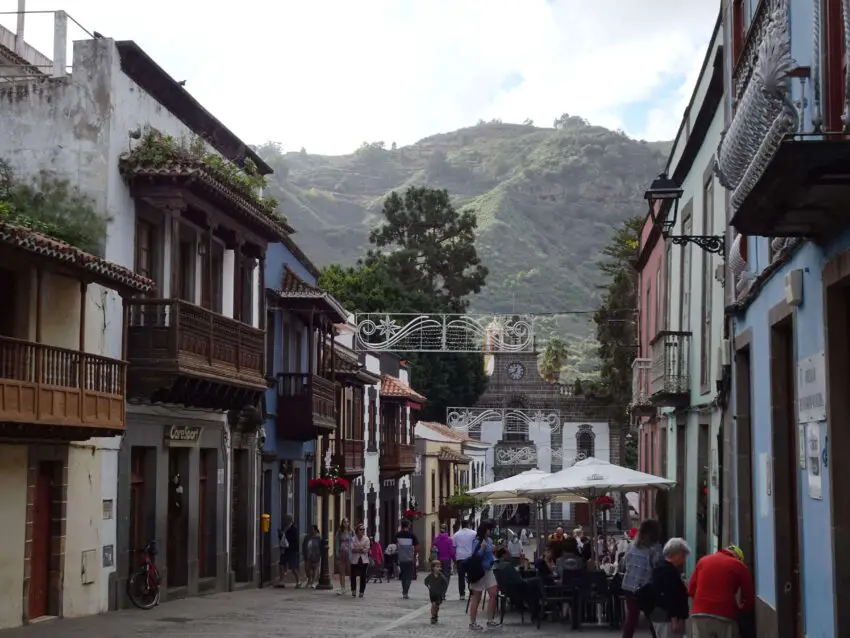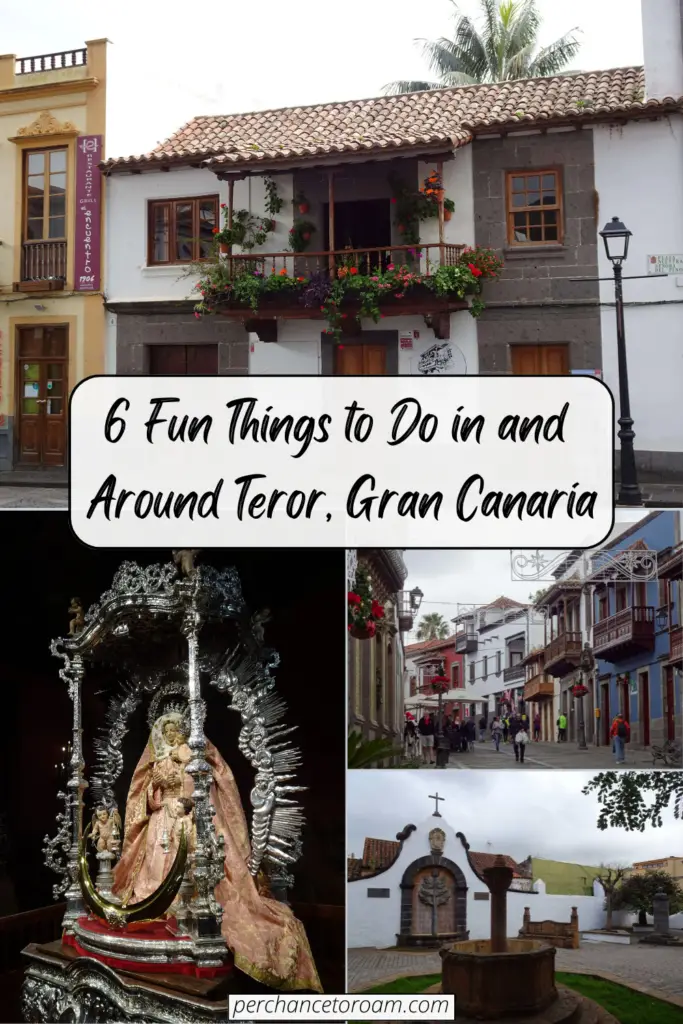Despite its somewhat outlandish name, Teror is actually a pretty small town in the hills of northern Gran Canaria, full of cute alleyways and colourful colonial houses with carved wooden balconies.
Apparently, the place draws big crowds for its weekly Sunday Market, but we visited on a weekday and enjoyed the rather laid-back atmosphere, especially once we left the main square behind us.
Read on for everything you need to know about visiting one of the oldest towns on Gran Canaria.
This post may contain affiliate links, and I might earn a small commission at no additional cost to you. For more info, click here.
The Best Things to Do in Teror
Teror’s tiny centre is a nice place for a short stroll, and there are some cute historic town houses to check out. The highest concentrations of these are along Calle Real de la Plaza and around the main square (check out the wooden balcony full of blooming flowers on the southern side of the square).

Top 3 Hotels in Teror
Budget: Teror Centro 1
Midrange: La Cabañita
Luxury: Carmelo y Carmela 1 (pictured)
.
The small alleyway of stairs leading up the hill north of the Basilica is also worth checking out, with its many little fountains and blooming flowers. While exploring the streets and alleyways, there are a few more tangible sights worth stopping by.
Basilica de Nuestra Señora del Pino
This church on the main square is Teror’s star attraction and also a Catholic site of pilgrimage. Most of the pretty neoclassical building dates to the 1760s, while the tall bell tower belongs to an older incarnation of the church. There’s also a number of psychedelic-looking gargoyles along the edge of the roof.
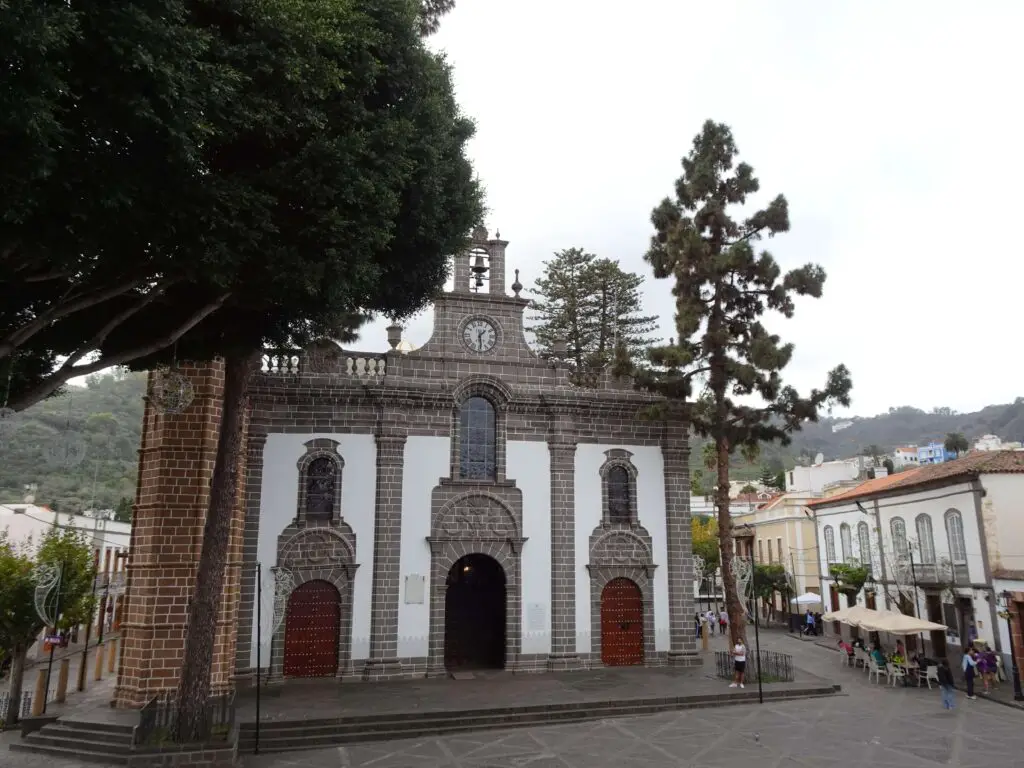
The façade is certainly beautiful, but the interior is what really caught our attention. The ornate altarpiece, adorned with gold leaf, houses the famous statue of the Virgin del Pino, the patron saint of the island, which according to legend, appeared in a pine tree near the town in the late 15th century.
One might be excused for assuming the local priest had a few swigs of the sacramental wine before that encounter, but the statue itself is actually really pretty. You can get even closer to it by visiting the Treasure House Museum in the back of the Basilica. You can check the opening times of the church here.
Treasure House Museum
The small treasure house at the back of the basilica is also known as the Museum of the Basílica Nuestra Señora del Pino. Normally, we’re not really into museums of religious art, but this one came highly recommended, and we were glad we ended up checking it out.
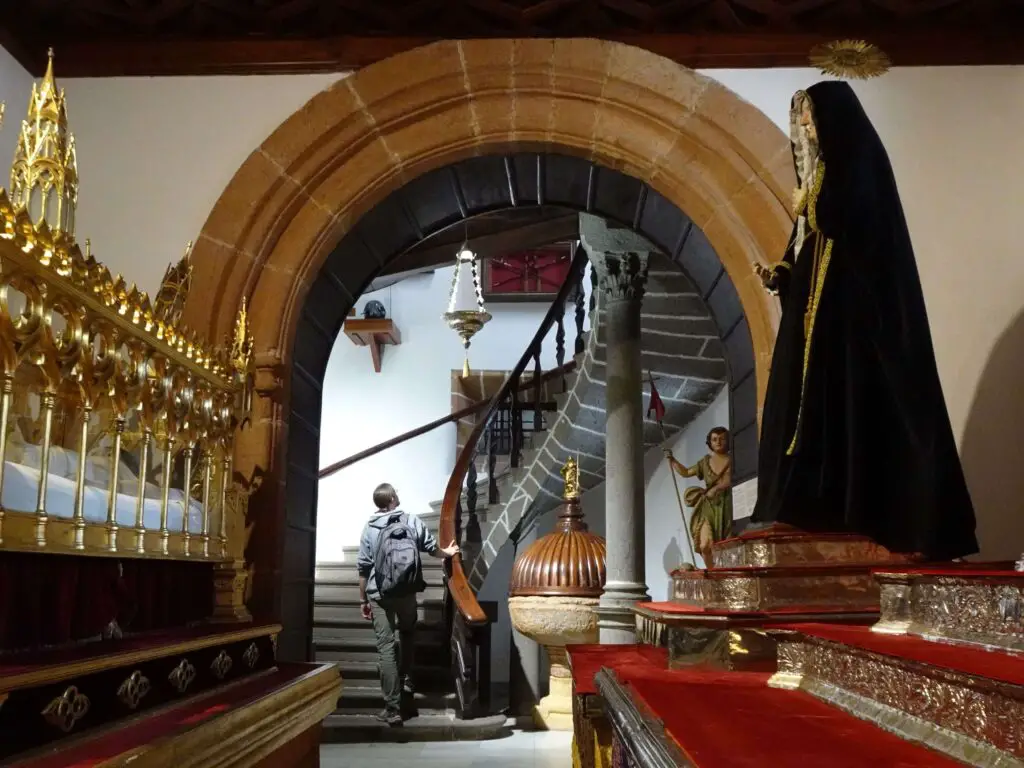
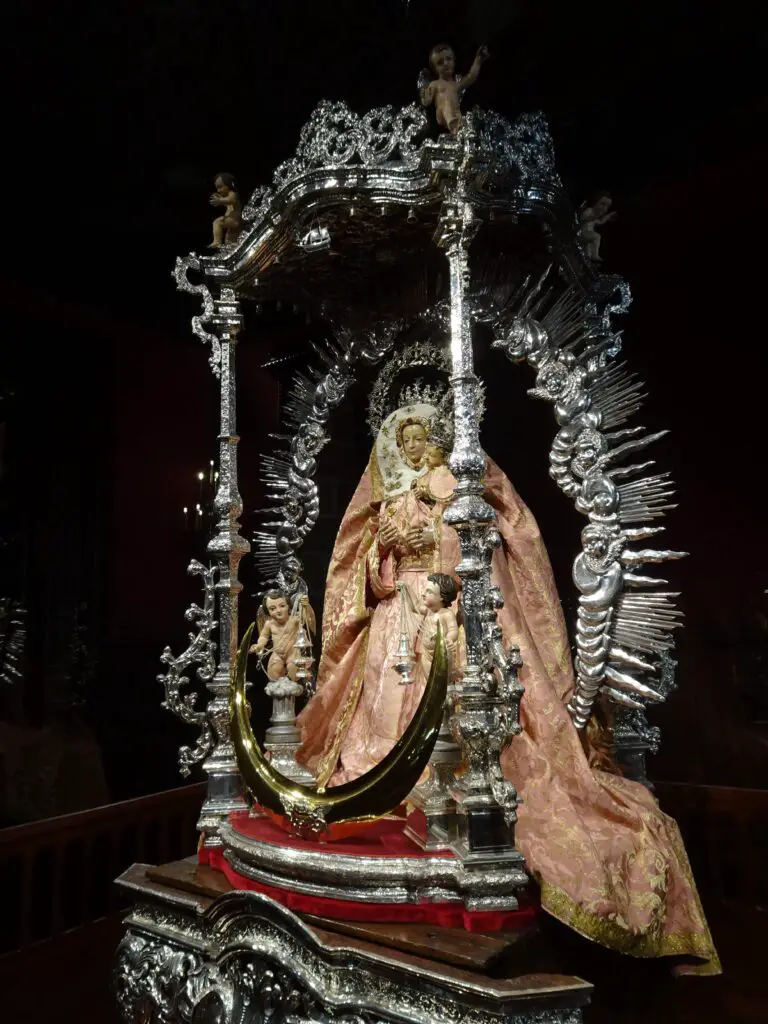
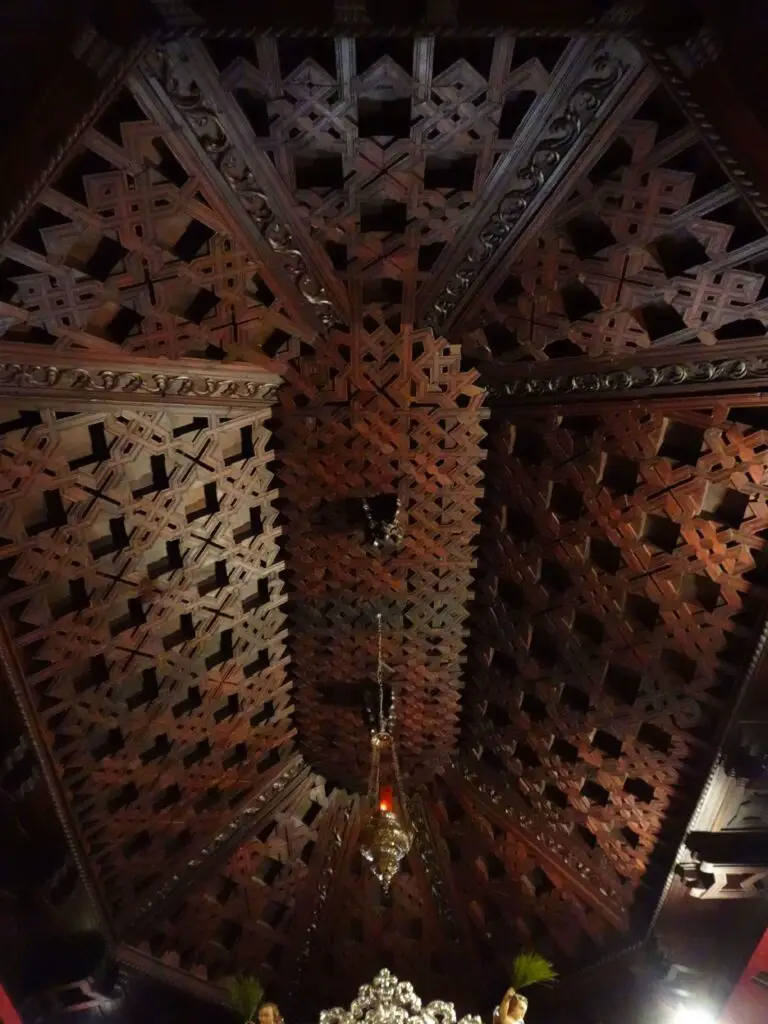
First of all, the rooms it’s housed in are really beautiful and sometimes more interesting than the objects themselves (make sure to check out the intricately carved Mudéjar-style ceilings). That said, there are some pretty wooden statues and intricate silver altar decorations on display, too.
The museum also gives you a chance to basically wander into the altar and check out the Virgin del Pino statue from up close. Her face is said to reflect ‘grace and gentleness’, although we thought she looked a bit annoyed, rather. The museum is only open for a few hours every day. You can check the times here.
Plaza del Pío XII and Palacio Episcopal
In the back of the Basilica is the Plaza del Pío XII, named after the controversial pope, who came to visit the virgin in 1934 (At least it’s not named after Franco, who also dropped by – Fascists and collaborators apparently were pretty fond of the statue).
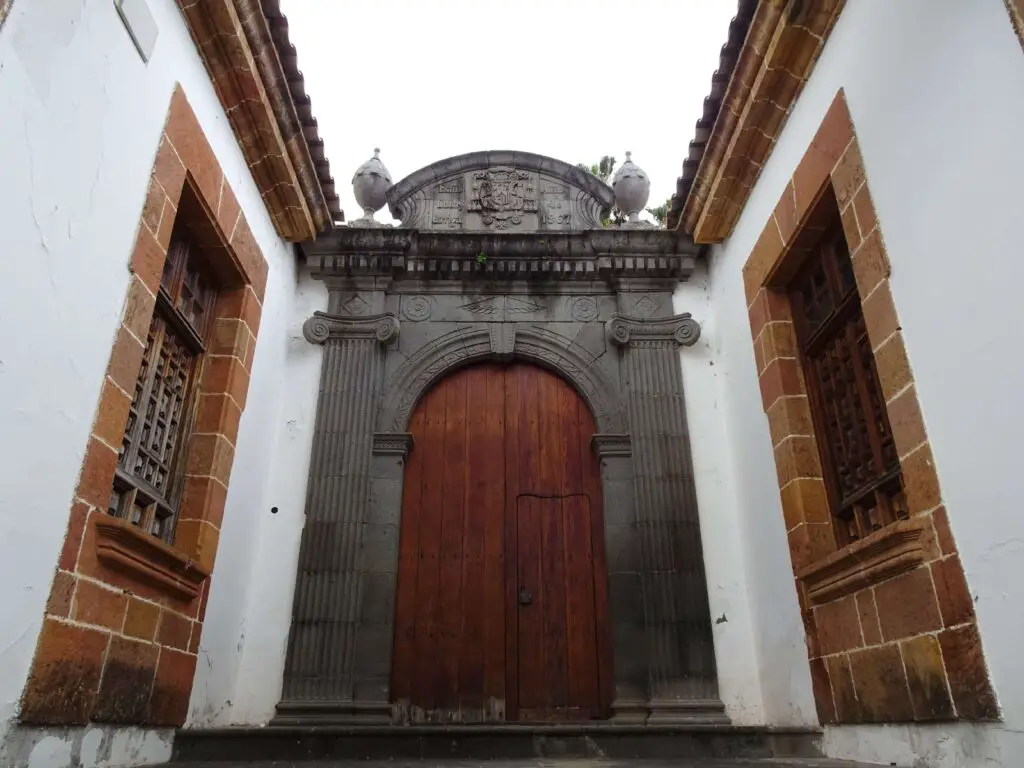
The Plaza is a nice shady square dominated by the large Episcopal Palace, which has a pretty carved stone archway that is worth a look. The somewhat incongruous modernist building at the eastern end of the Square is the town’s surprisingly big auditorium.
Plaza Bolívar
For me, this little square to the south of the town hall is the prettiest spot in Teror. It’s named after locally born Teresa de Bolívar, the wife of Simon Bolívar, whose bust can be found at the eastern side of the square.
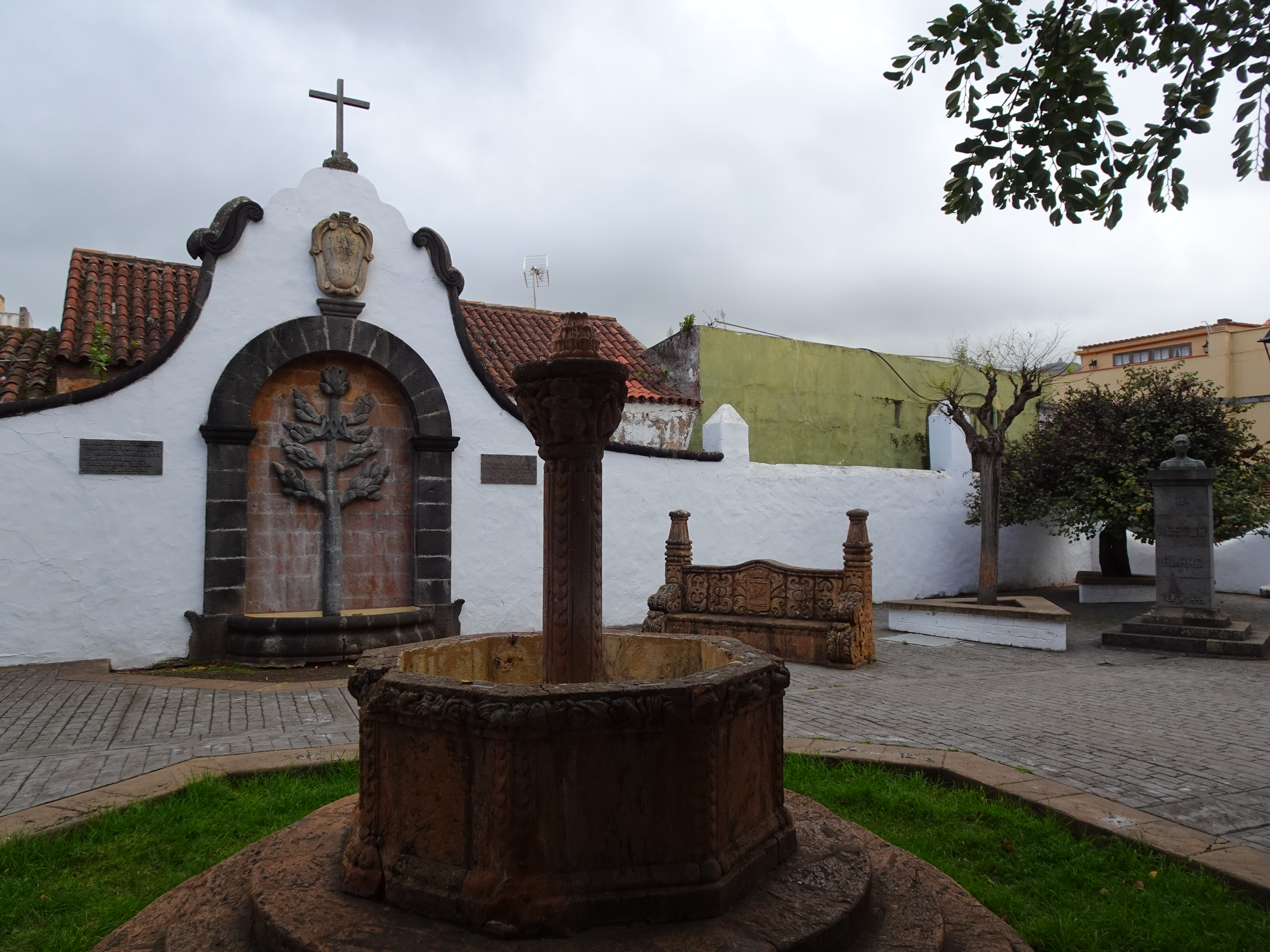
Otherwise, Plaza Bolívar is shaded by Canary Island bellflower trees and has a number of interesting stone carvings, including a wall relief of the tree of life, an intricate central fountain and the most regal looking park benches we’ve ever come across.
Casa de los Alvarado
At the eastern end of the main square, you’ll find Teror’s tourist information office, which is located in the Casa de los Alvarado. The rooms of the historic building are arranged around a pretty central patio, and the upper floors hold a tiny exhibition on the town’s history and traditions.
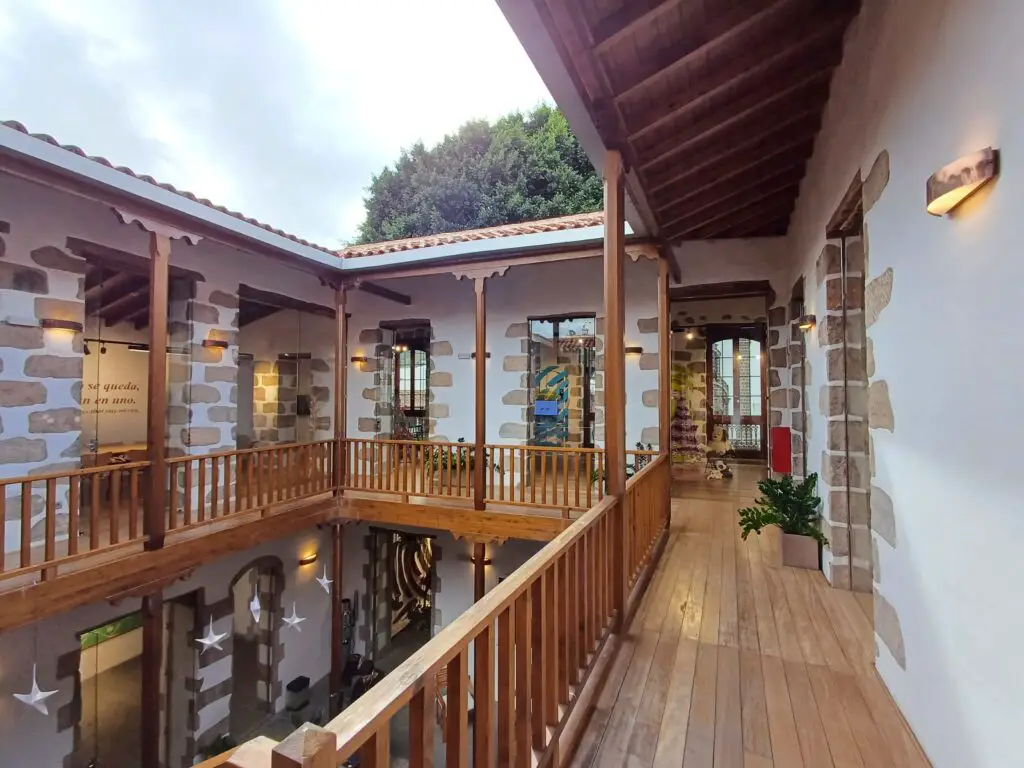
More importantly, it also has the best views of the Basilica and the little main square, which is dominated by what must be the biggest Dragon Tree on the island (certainly the biggest we came across). You can check the current opening times of the tourist information office here.
Finca de Osorio
A little outside of Teror sits this working farm, whose’s grounds are open to the public and worth exploring for an hour or two. We came here in the late afternoon, when hardly anyone else was around, and it was pretty magical.
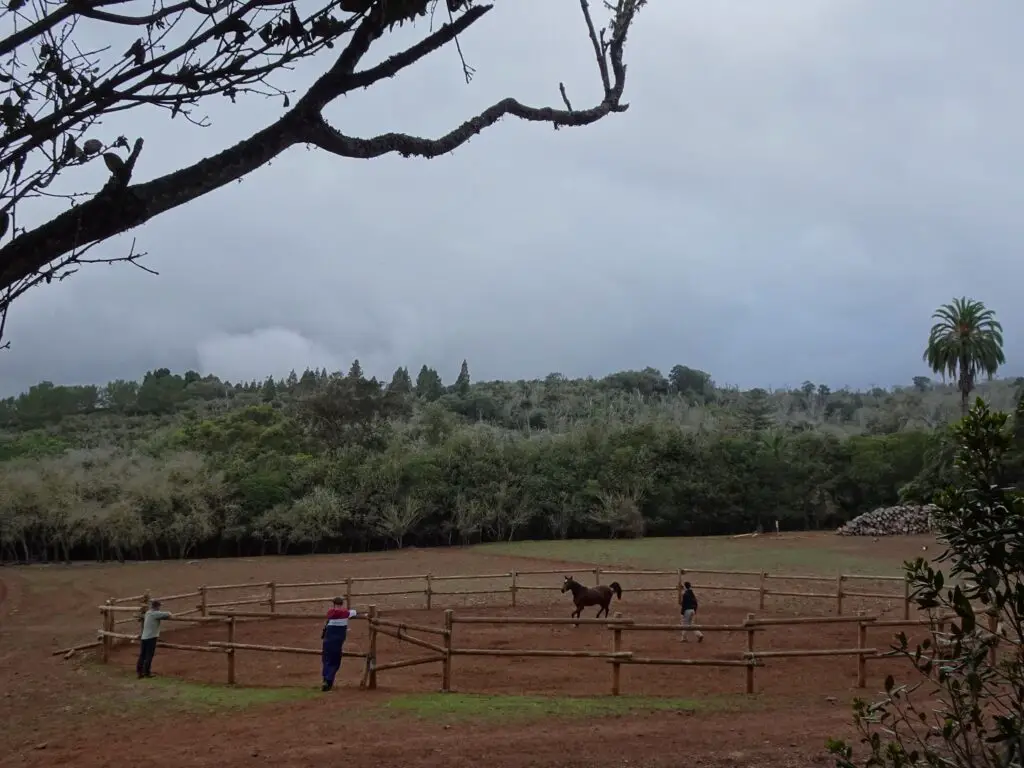
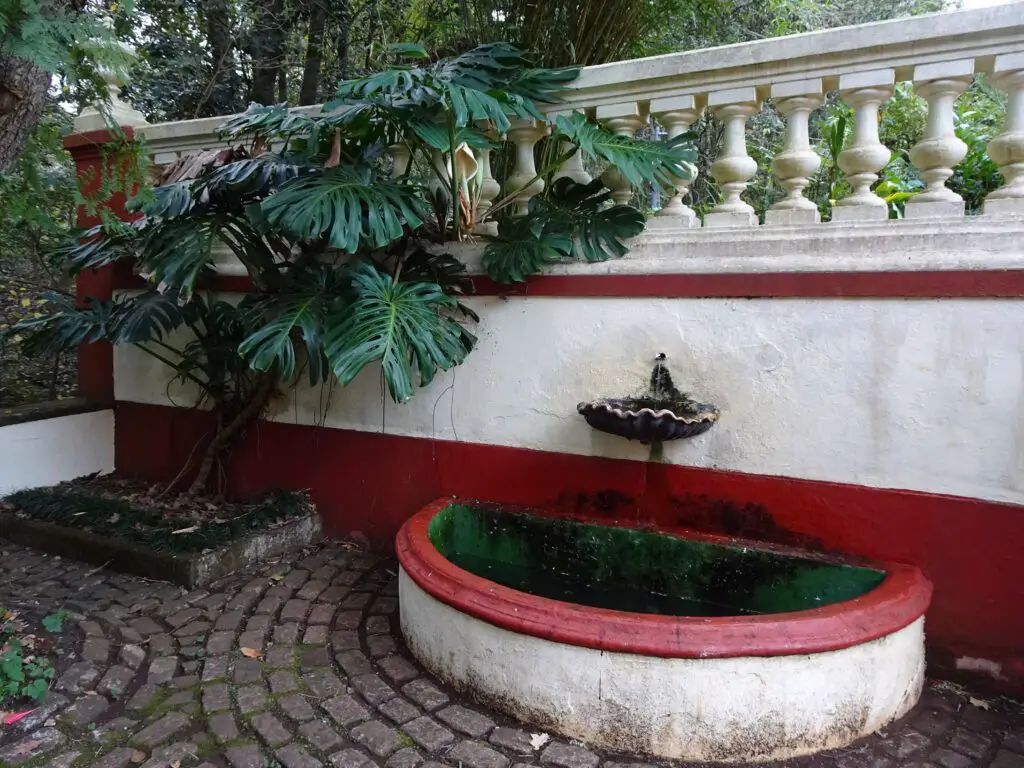
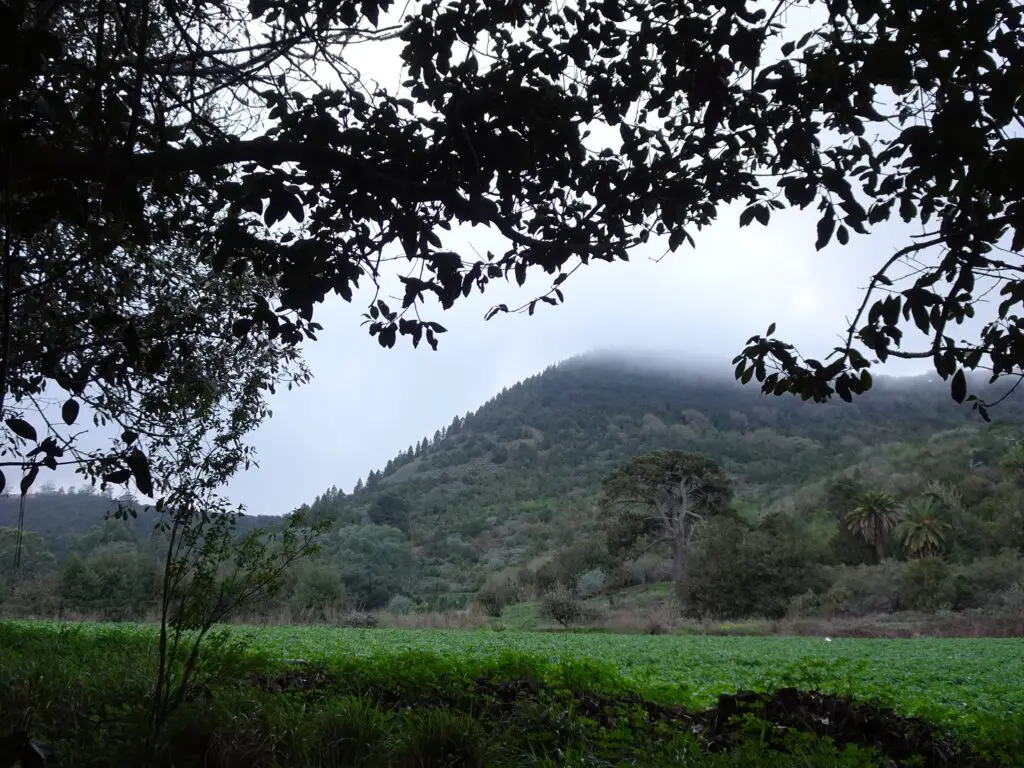
The formal garden is full of blooming flowers and trickling fountains, but the real reason to come here are the hiking trails through the hills and forest behind the farm. There are several to choose from, the longest of which take a few hours to complete.
As it was pretty late when we arrived, we chose one of the shorter trails (R-4), which still gave us a great introduction to the area and led through a pretty section of laurel forest, that reminded me a little of the Forest of La Llania on nearby El Hierro.
The farm lies about 3km north of Teror off the road to Arucas. Again, the current opening times can be found on this site.
Map of Sights in Teror
All the places mentioned in this post can be found in this map of Teror.
Practicalities
Where to Stay Near Teror
We don’t have any first-hand information here, as we visited Teror as a day-trip when we stayed in nearby Tenteniguada. Still, there are a few well-rated budget options in town, like Teror Centro 1 as well as some mid-range places like La Cabañita. If you’re looking for seclusion and complete luxury, Carmelo y Carmela 1 might be for you.
Where to Eat in Teror
As Teror is a popular destination, there are quite a few places to eat in the centre. However, I can highly recommend walking a few minutes to Cómo Como 15, a small restaurant with a cute garden, where we really liked the Pulpo (squid) with potatoes.
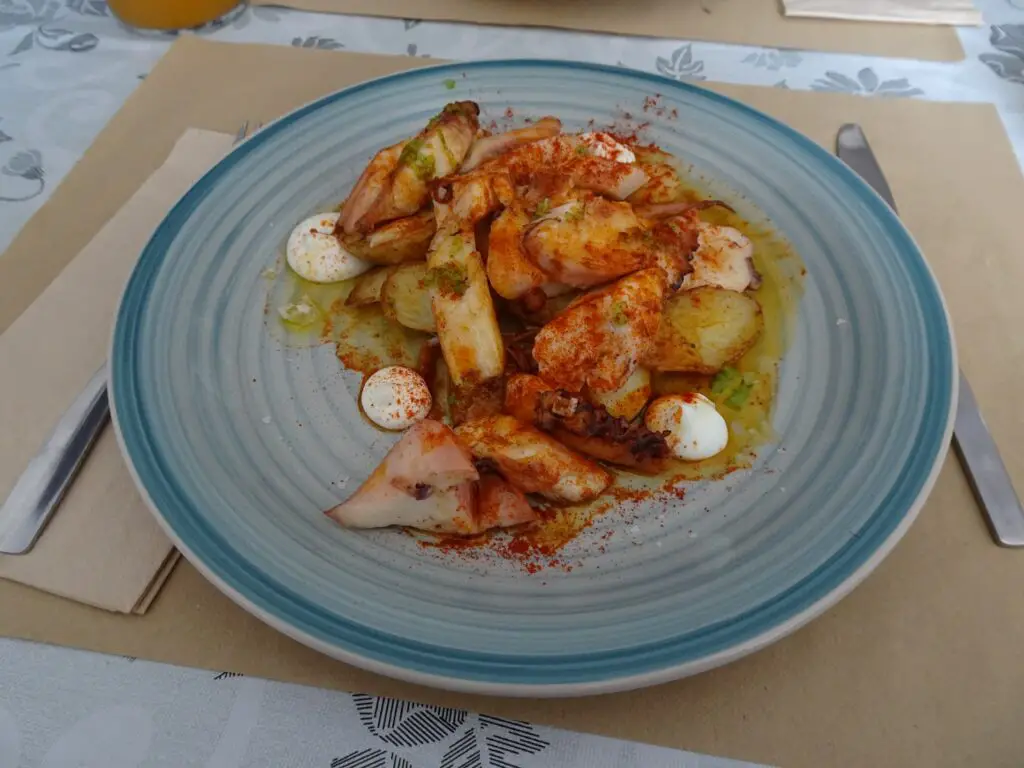
The restaurant can be found at Calle los Viñatigos 15 at the southern end of town.
How to Get to Teror by Bus
As with most places on the island, the easiest way to get to Teror is by rental car. If you’re traveling by public transport, the easiest option is to take the Global Bus Line 216 from Las Palmas, which runs several times a day and takes about 45 minutes. You can check the current timetable here.
If you’re trying to reach the town from the resorts in the South, you’ll have to first make your way to Las Palmas and change buses there.
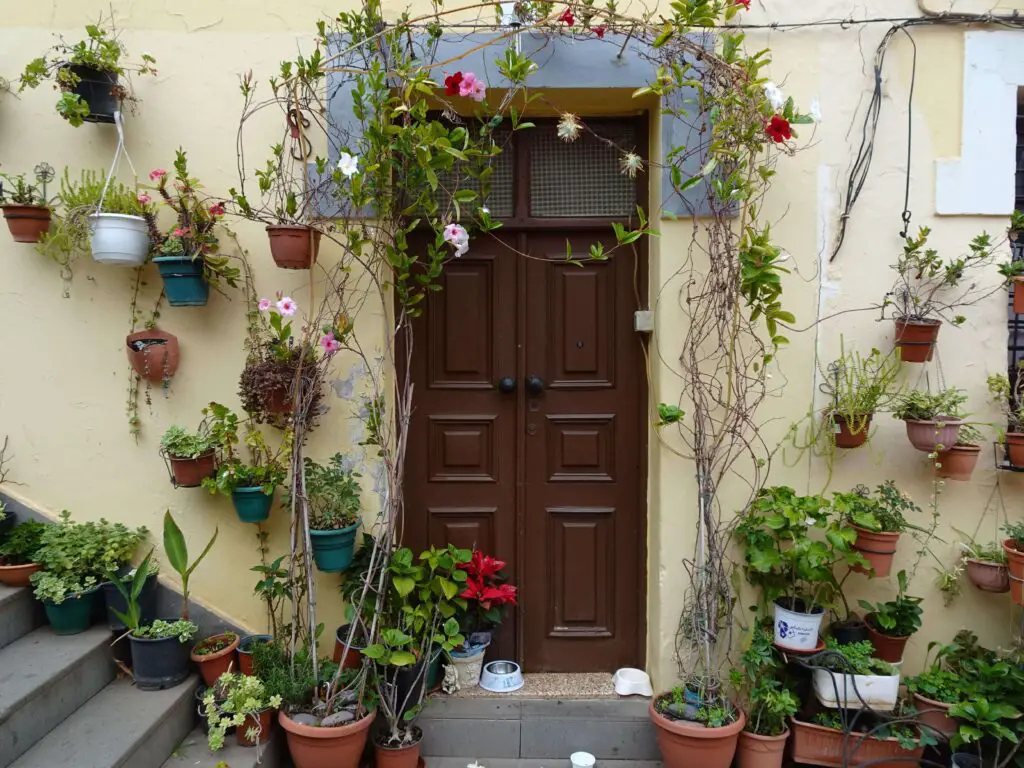
Where to Park Your Car in Teror
If you’re driving to Teror yourself, you’ll have to leave your car outside the pedestrianized zone around the Basilica. The best option is the free public parking lot near the bus terminal, directly north-east of the town centre.
